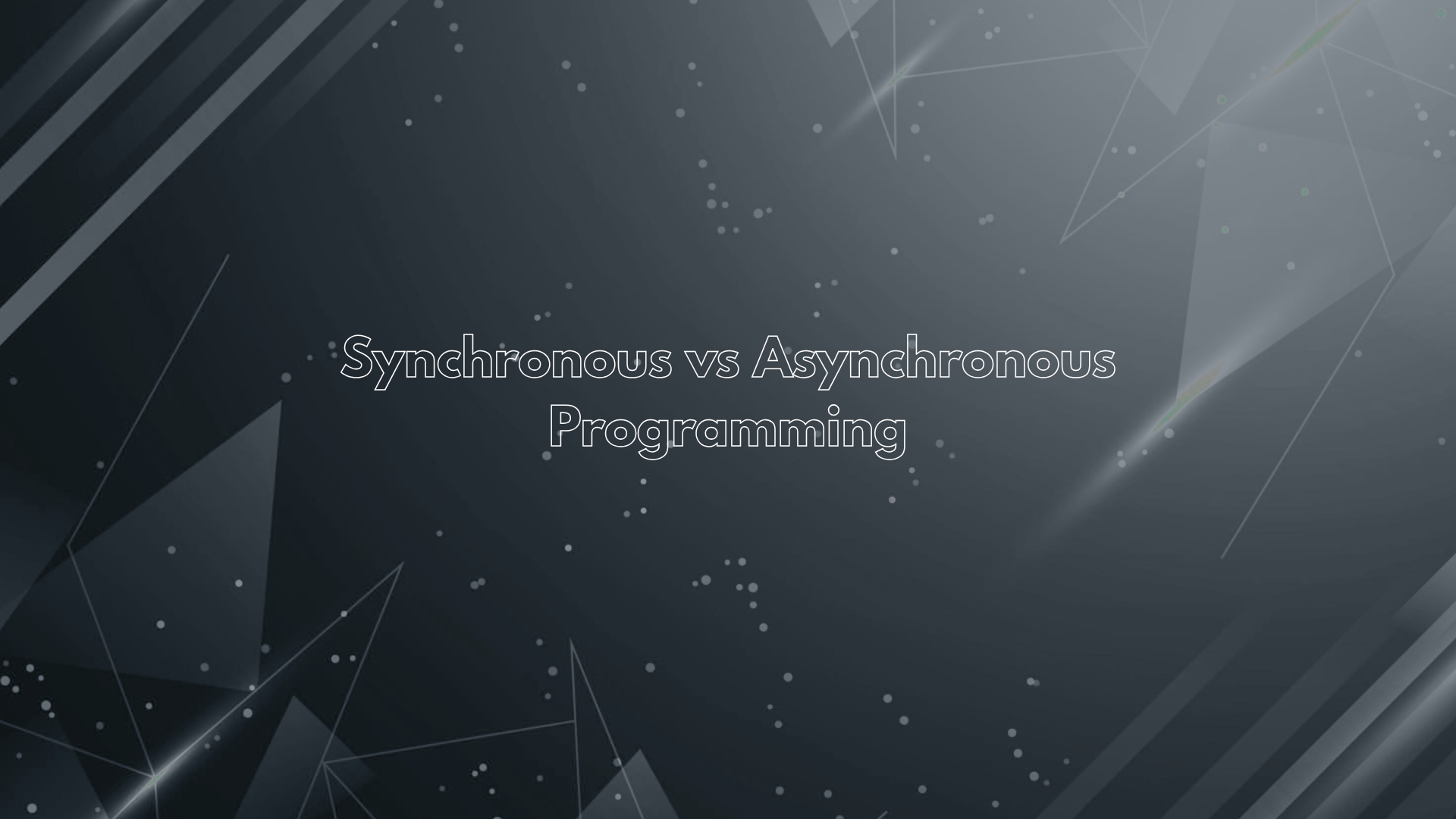Asynchronous vs. Synchronous Programming


In addition to the choice of code and development tools, specialists choose code execution models, and about 8 such approaches are used in modern programming. Let’s consider two of them by the input/output (I/O) method.
Asynchronous and synchronous programming are code execution models related to parallelism, I/O, and multitasking models. They determine whether the thread of task execution will be blocked or not. Asynchronous programming is a non-blocking approach to software architecture development when the start of a new operation does not wait for the completion of other I/O operations. An example of such an architecture model in real life is ordering in a restaurant. Guests place an order, waiters send it to the kitchen, the process of cooking takes place in parallel, and the completion of the processes depends on the complexity. That is, each guest receives a dish when it is ready, even if his or her order was one of the last to arrive in the kitchen.
Synchronous programming – is a blocking I/O approach, where one task will not start until the previous one is completed. In real life, a queue for one working cash register is a great example of synchronous programming. Until one customer leaves to pay, the next one won’t be checked out.

To further understand each method, let’s compare synchronous vs asynchronous programming. Blocking input/output is used for small projects or when the order of execution is crucial. The non-blocking I/O type is effective for large-scale projects with time-consuming operations. It may seem to a non-expert that the step-by-step method is no longer relevant, but in fact, it is still actively used, for example, to process transactions in banks. To continue with this topic, we need to dot the i’s and cross the t’s.
Are there any difference between synchronous and asynchronous programming language? JavaScript, Python, and C# are used for both models. Each of these languages is flexible, consistent, and offers numerous solutions, so the only question is how to implement it. For example, developers use a threadless Python script for synchronous construction, and Python asyncio for the multithreaded model. Node.js is mostly used for asynchronous programming. Its libraries and frameworks expand the potential of a non-blocking system in processing large volumes of tasks
Linear, predictable and simple synchronous programming code is a reliable and logical approach to development. It is easy for specialists to work with, and every element is clear. Asynchronous programming is correspondingly more complicated due to the presence of callbacks and additional constructs.
Synchronous systems are difficult to scale because more tasks require more resources. Therefore, when the number of tasks increases and the CPU can’t cope, the system can freeze. That’s why the difference between synchronous and asynchronous execution is a key factor in choosing a project approach. If the customer is interested in creating a simple software solution but definitely plans to develop and grow it in the future, the development team should take this into account. As a result, they should assess the risks and possibly abandon the synchronous approach.
Despite the fact that asynchronous programming has a more complex code structure, it uses fewer resources. Why is that? In the synchronous approach, each thread waits for the previous input/output operation to complete. In order for the system to process multiple tasks, it is necessary to create multiple threads, each of which occupies CPU memory and uses operating system resources for switching.
Based on the comparison of async vs sync, we can conclude that the async method is more efficient. The system performs many tasks at the same time, uses fewer resources, reduces the load, and as a result, increases productivity. However, the sync approach shows better performance in certain development and project conditions.
The choice between synchronous vs asynchronous programming approaches depends on the specific task, application type, and system architecture.
| Type | Sync | Async |
|---|---|---|
| Model | Step-by-step implementation | Non-independent execution |
| Use of resources | Consumes a lot of resources and memory | Uses less memory and resources |
| Scalability | Challenging | Easy |
| Programming languages | JS, Python script, C# | JS, Python asyncio, C# asyncio, Node.js |
| Focus | Simple small and medium-sized systems | Complex systems |
| Error handling | Can spread errors | Can isolate errors |
| I/O speed | Slow | Fast |
| Code simplicity | Simple, straightforward | Complex |
| Setting up | More complicated | Lighter and easier |
| Synchronisation | Reliable task synchronisation | Errors may occur |
| Responsiveness | Normal | Improved |
| Blocking calls | Possible | Are avoided |
| Productivity | Normal | High |
If you compare sync vs async calls, the asynchronous way of expressing code has an advantage. The problem with synchrony is that the system can block calls — even when the underlying operation is non-blocking—if not properly managed. This can lead to inefficient resource usage and unexpected behaviour, such as thread starvation or deadlocks. While synchronous code is often easier to read and reason about, it tends to scale poorly under heavy load.
We’ve already looked at the characteristics in detail and identified the difference between synchronous and asynchronous programming. To determine which method to use, consider: the project and its future potential, how soon the system will need to be expanded and updated, whether it is a small project or a solution for a wide range of users.
When is async programming useful? For example, for network operations and real-time applications. Asynchronous programming offers fast execution of tasks with a low load for optimal and fast information exchange, online chat, or online gaming solutions, . This approach is widely used to develop web and API solutions, often using Node.js technologies. Undoubtedly, the async method is suitable for systems with a large database, codes that constantly receive input/output requests.
Some tasks may work better in a synchronous environment if they don’t require a lot of processing power and don’t have long waited times for input or output. Synchronous programming is useful when the sequence of actions is critically important when processing financial transactions, migrating databases or performing authentication processes. Sometimes the sync approach is used for backend solutions, back-end APIs, and microservices. The difference between synchronous and asynchronous execution determines the choice of programmers for different projects. We hope this article was useful for you.
PNN Soft is an experienced developer and is well versed in modern programming approaches. To get advice on custom development of systems, applications and softwa